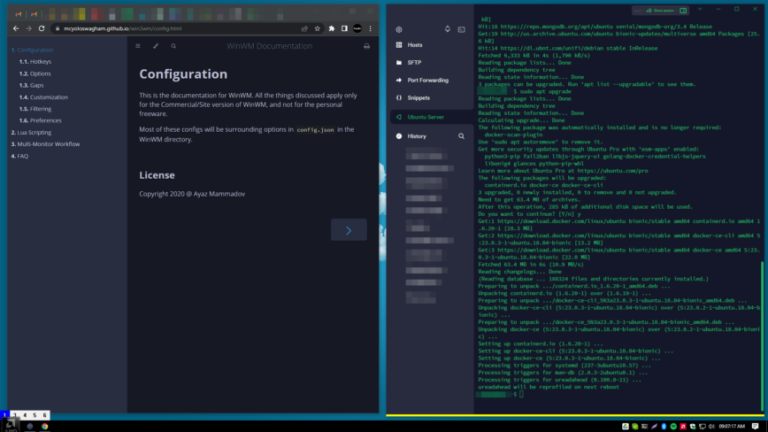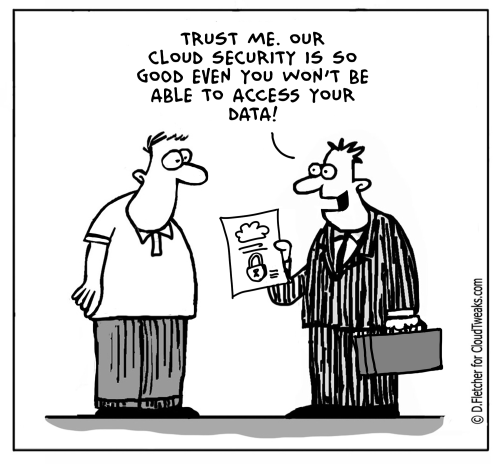
Injection attacks exploit vulnerabilities in APIs by sending malicious input to manipulate data handling processes. Common types include SQL and XML injection, where attackers insert malicious code through API requests. These attacks often result from inadequate input validation, allowing code execution that can compromise databases and data integrity. Organizations need input validation and parameterized queries to mitigate injection attacks.
APIs in cloud architectures often face increased exposure, raising their vulnerability to attacks. Cloud environments rely heavily on APIs for service integration and resource management. These APIs often become critical access points, attracting the attention of attackers seeking entry into cloud systems. With increased exposure, APIs are at a heightened risk of being targeted, especially if security measures are insufficient.
Impact of API Attacks on Cloud Security
Data Breaches and Loss of Sensitive Information
These breaches often expose business-critical information, disrupting operations and causing a loss of competitive advantage. APIs are a direct gateway into the core functionalities of applications, making them prime targets for exploiting. Attackers can retrieve, manipulate, or delete data, leaving organizations vulnerable to further exploitation. Businesses must employ security measures, including encryption and authentication mechanisms, to protect API communications from interception and theft.
Proper API usage monitoring can help detect anomalies indicative of abuse. By employing API management solutions, organizations can gain visibility into API traffic patterns, identifying unusual usage promptly. Strengthening authentication and authorization mechanisms and defining clear usage policies can reduce the potential for API abuse. Educating users and developers about responsible API usage is also essential.
Disruption of Cloud Services
To prevent these attacks, organizations must enforce strict authentication methods such as OAuth, ensure proper session management, and regularly audit access controls. Implementing multi-factor authentication and validating access permissions for each API request can further strengthen security. By addressing these vulnerabilities, the likelihood of authentication and authorization bypass attacks can be minimized.
API attacks target the application programming interfaces that connect different software systems. These attacks exploit vulnerabilities in APIs to disrupt services, steal data, or gain unauthorized access to sensitive data. APIs offer communication between apps but expose endpoints to hackers. Attackers see APIs as a surface for infiltrating systems, leveraging weak authentication, or circumventing authorization. Their focus is to exploit these interfaces to achieve malicious objectives.
Compromised Cloud Infrastructure
To mitigate DDoS attacks, organizations should implement rate limiting and request throttling to control the volume of API requests. Deploying content delivery networks (CDNs) and web application firewalls (WAFs) can also help filter out malicious traffic. Continuous monitoring of network traffic and employing traffic analysis tools can aid in detecting and neutralizing such attacks before they cause severe disruptions.
As the threat landscape evolves, so must the strategies for securing APIs. Regular audits, testing, and staying abreast of emerging security trends are essential for maintaining effective protection. Educating development teams and stakeholders about the importance of API security further reinforces a culture of security awareness. By adopting security practices, organizations can safeguard their APIs and protect critical business functions against potential cyber threats.
Why APIs Are Vulnerable in the Cloud
Increased Exposure of APIs in Cloud Architectures
Continuous monitoring of API traffic is vital for detecting suspicious activities and potential threats. By analyzing traffic patterns, organizations can identify anomalies, such as unusual request volumes or abnormal data access attempts. Real-time monitoring allows immediate response to threats, mitigating risks before they escalate into serious breaches or disruptions.
Organizations should incorporate security audits into their development cycles, ensuring that any changes do not introduce new vulnerabilities. Regular testing not only highlights weaknesses but also reinforces security practices across the development team. Staying informed about emerging threats and security advancements is crucial for maintaining API security postures.
Rapid Growth of APIs in Cloud-Native Environments
The rapid growth of APIs in cloud-native environments has led to an increase in their vulnerability. As businesses adopt cloud-native architectures, the reliance on APIs grows exponentially to support dynamic, scalable applications. This growth often outpaces the implementation of adequate security measures, leaving new and existing APIs exposed to threats.
This exposure is exacerbated when cloud APIs lack proper authentication and are poorly configured. Attackers can exploit these weaknesses to gain unauthorized access and execute malicious activities. As APIs facilitate communication across distributed cloud services, they must be secured rigorously. Measures, such as employing strong authentication and minimizing unnecessary API exposure, can limit potential attack vectors.
Misconfigurations and Poor API Security Practices
Implementing monitoring solutions that provide visibility into API transactions is critical for proactive security management. Such tools should be capable of generating alerts and reports that inform security teams of potential breaches. Regularly reviewing monitoring data and refining detection metrics can enhance an organization’s ability to defend against sophisticated API attacks.
Organizations often fail to update or patch APIs, leaving them susceptible to known vulnerabilities. Security practices must include thorough testing, consistent monitoring, and timely updates to address such issues. Implementing security best practices, like using encryption and strong access controls, can significantly reduce the risks associated with misconfigurations. Training and awareness among developers can further enhance the security of cloud APIs.
Common Types of API Attacks
Injection Attacks
Such attacks can lead to unauthorized data access, corruption, or deletion. APIs handling user input without proper validation are particularly susceptible. Automated scanners and security audits can help identify weaknesses, ensuring APIs are not vulnerable. By securing all data inputs and performing regular security checks, the risks associated with injection attacks can be minimized, maintaining the integrity of applications and databases.
Common API attack techniques include injection, where attackers send malicious code or requests to manipulate servers. Cross-site scripting and SQL injection are common methods used. API vulnerabilities are often due to misconfigurations, poor security practices, and lack of updates. The attack can lead to severe consequences such as data breaches and downtime, impacting businesses and users alike. Organizations must prioritize securing their APIs to counter threats.
Authentication and Authorization Bypass
Compromised cloud infrastructures can facilitate lateral movement within networks, allowing attackers to spread malware or access other critical systems. Organizations utilizing cloud services must ensure that APIs are secured through authentication, regular audits, and monitoring. Best practices such as employing API gateways and keeping APIs updated are crucial to mitigate risks posed by potential compromise of cloud environments.
By Gilad David Maayan
Distributed Denial-of-Service (DDoS) Attacks
Man-in-the-Middle (MitM) attacks involve an attacker intercepting API communications to eavesdrop or manipulate data exchange. These attacks exploit unsecured channels, allowing attackers to intercept sensitive information such as login credentials and confidential data. APIs using weak or no encryption are particularly susceptible to MitM attacks, posing a substantial threat to data integrity and confidentiality.
Misconfigurations and poor API security practices are common reasons APIs become vulnerable in the cloud. Simple misconfigurations, such as exposing sensitive information in API responses or using weak authentication, can provide attackers with easy entry points. Additionally, APIs may be inadequately tested for security vulnerabilities, leading to overlooked flaws that attackers can exploit.
Man-in-the-Middle (MitM) Attacks
Authentication and authorization bypass attacks occur when attackers exploit API weaknesses to gain unauthorized access to systems. Improperly implemented authentication protocols or missing authorization checks are common vulnerabilities exploited in such attacks. This allows attackers to impersonate legitimate users or access sensitive data without appropriate permissions, posing significant security risks.
API attacks can compromise the entire cloud infrastructure, leading to unauthorized access and control. Attackers exploiting weak APIs gain entry points to manipulate underlying cloud frameworks. This compromise can result in the alteration of infrastructure configurations, resource abuse, and unauthorized provisioning of services. Such actions can disrupt system integrity, leading to further vulnerabilities and decreased trust in cloud solutions.
API Abuse and Misuse
API gateways and web application firewalls (WAFs) play crucial roles in shielding APIs from attacks. API gateways manage and mediate communication while providing a single point of access control, handling tasks like authentication, rate limiting, and traffic routing. WAFs protect against common web vulnerabilities, filtering out malicious requests before they reach the API.
API attacks can cause significant disruptions in cloud services, impacting business continuity. When APIs are compromised, attackers can interrupt service availability by overloading systems or altering critical configurations. Denial-of-service attacks may target APIs specifically to render cloud services inaccessible to legitimate users. Such disruptions can lead to downtime, affecting productivity and customer satisfaction.
Best Practices for Protecting APIs in the Cloud
Encryption of API Communications
Encrypting API communications is essential to protect sensitive data from interception and tampering. Using secure protocols like TLS/SSL ensures that data transmitted between client and server remains confidential and unaltered. It’s vital for organizations to stay informed about the latest encryption standards and implementation practices, ensuring their APIs are not vulnerable to attacks.
The continuous integration and deployment practices in cloud-native environments can inadvertently result in unaddressed security gaps. This dynamic nature means that APIs are in constant flux, making it difficult to maintain a consistent security posture. To manage this, organizations need to integrate security into the development lifecycle, including automated testing and regular assessments, ensuring APIs remain secure amid rapid growth.
Implementing Rate Limiting and Throttling
Rate limiting and throttling control the number of requests a user can make to an API, preventing abuse and resource exhaustion. By capping request rates, organizations can minimize the risk of DDoS attacks and ensure fair resource usage across users. Rate limiting not only enhances API performance but also adds a security layer by preventing malicious actors from making excessive requests.
In conclusion, API security is a critical component of ensuring cloud environments remain secure and resilient against threats. The increasing reliance on APIs in business operations highlights the need for security measures. Organizations must prioritize the protection of their APIs by implementing best practices such as encryption, rate limiting, and continuous monitoring. Failure to secure APIs can lead to severe impacts, including data breaches, service disruptions, and compromised infrastructure.
Use of API Gateways and Web Application Firewalls
API attacks often result in data breaches, leading to the loss of sensitive information. When attackers exploit API vulnerabilities, they can gain access to private data like user credentials, financial details, and personal information. Such breaches can significantly impact both individuals and organizations, resulting in financial losses, reputational damage, and legal implications. Companies must focus on securing their APIs to prevent unauthorized access to sensitive data and maintain trust.
To protect against MitM attacks, organizations should enforce strong encryption protocols such as TLS/SSL for all API communications. Ensuring that server and client certificates are valid and trusted is crucial. Implementing mutual TLS (mTLS) can further authenticate both client and server, adding an additional layer of security. Regularly updating and patching cryptographic libraries ensures the effectiveness of encryption measures.
Continuous Monitoring of API Traffic for Suspicious Activity
These tools enable organizations to enforce security policies and monitor API traffic efficiently. By using gateways and WAFs, businesses can rapidly respond to threats and implement changes without affecting the API structure. They offer convenience in managing large-scale API deployments and improving overall security posture, essential for safeguarding APIs in cloud environments.
These disruptions often result in increased operational costs as companies attempt to restore services and mitigate damage. Attackers may exploit vulnerabilities to execute resource-intensive commands, affecting the performance of cloud services. Organizations need monitoring and defensive strategies to detect anomalies early and minimize the risk of disruptions. Proactive API security can help maintain service in the face of potential threats.
Regular API Security Audits and Testing
API abuse and misuse occur when APIs are exploited beyond their intended use, often leading to resource exhaustion or unauthorized activities. Attackers may reverse-engineer APIs to perform unauthorized actions, like scraping data or manipulating service behaviors. Inadequate access controls and unmonitored API usage contribute to such risks. Preventing misuse entails implementing rate limiting and access control policies.
Regular API security audits and testing are fundamental to identifying and mitigating vulnerabilities. Through systematic evaluation of API implementations, audits help detect security flaws that might be exploited by attackers. Security testing, including penetration testing and vulnerability scanning, simulates real-world attack scenarios to ensure APIs withstand malicious attempts.
Conclusion
Enforcing encryption prevents unauthorized parties from accessing sensitive information, thereby maintaining data integrity and confidentiality. Data breaches often stem from unencrypted communications that are easily intercepted. Organizations should prioritize end-to-end encryption and periodically review encryption strategies and keys to adapt to emerging threats, maintaining API security.
These techniques involve setting thresholds and rules for API requests, curbing potential misuse. Rate limiting policies should be aligned with business needs while maintaining API performance. Implementing these strategies ensures the system remains accessible and functional, even under high demand, while safeguarding against attacks that exploit API vulnerabilities.
Distributed Denial-of-Service (DDoS) attacks on APIs involve overwhelming the target service with excessive requests, rendering it unavailable to legitimate users. Attackers often use botnets to distribute requests, creating significant network congestion. Such attacks can severely disrupt online services, leading to reputational damage and financial losses. APIs that lack rate limiting are particularly vulnerable to DDoS attacks.





